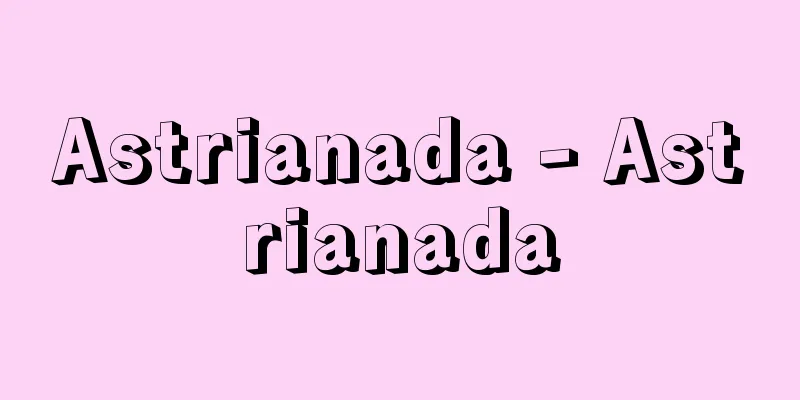Rice stem maggot

|
An insect belonging to the family Ceromyzidae, suborder Brachyceratoidea, group Flies. It is distributed throughout Japan, and its larvae are well known as pests that parasitize rice and cause damage, and are agriculturally known as rice gnats. The adult's body length and wing length are both 2.5 mm, and the body color is yellow. The antennae and large triangular ocelli are both black. The dorsal thorax has three thick black "small"-shaped vertical stripes and thin vertical stripes on the outside, disguised as gray powder. The larvae live near the growing point of rice plants and feed on the growing leaves and ears. The tips of damaged leaves turn yellowish-white, or long, thin feeding marks called scar leaves appear as vertical stripes, and the damaged plants become white, sasara-like scar ears. The eggs are long and thin, white with a long diameter of 0.7 mm, and are laid in spots on rice leaves. The larvae are headless maggots with a milky white color that grow to 9 mm in length. The pupae are pale brown and 7 mm long, and are found near the opening of the leaf sheath. Two generations occur per year in Hokkaido and the Tohoku region, and three in other regions. The larvae overwinter in the leaf sheaths of plants in the Poaceae family, such as foxtail grass and rice bran. The incidence rate is high in warm winters with little snowfall, and damage is greater when nitrogen fertilizer is used in large amounts. It is also known that the damage caused varies significantly depending on the insect resistance of the rice variety. [Shushiro Ito] ©Tatsuo Ikeda ©Kenzo Otawa ©Kei Daishoji "> Major types of flies (3) Buccal group - wingless… Source: Shogakukan Encyclopedia Nipponica About Encyclopedia Nipponica Information | Legend |
|
昆虫綱双翅(そうし)目短角亜目ハエ群キモグリバエ科に属する昆虫。日本各地に分布し、幼虫はイネに寄生して被害を与える害虫として著名で、農業上はイネカラバエとよばれる。成虫の体長と翅長はともに2.5ミリメートルで、体色は黄色。触角と大形の単眼三角部はともに黒色。胸部背面には黒色の「小」字形の太い3縦条と、その外側に細い縦条があり、灰色粉を装う。幼虫はイネの成長点付近に生息し、伸長してくる葉や穂を食害する。被害を受けた葉は葉先が黄白色に変色するか、または傷葉(きずば)とよばれる細長い食痕(しょくこん)が縦条となって現れ、被害株は白色のささら状の傷穂となる。卵は細長く、長径0.7ミリメートルの白色で、イネの葉に点々と産み付けられる。幼虫は無頭のウジで乳白色を帯び、成長すると体長9ミリメートルになる。蛹(さなぎ)は体長7ミリメートルの淡褐色で、葉鞘(ようしょう)の入口付近でみつけられる。北海道と東北地方では1年に2世代、そのほかの地方では3世代発生し、幼虫態でスズメノテッポウ、ヌカボなどイネ科の植物の葉鞘内で越冬する。暖冬で積雪量が少ない年に発生率が高く、窒素肥料を多用すると被害が大きい。また、イネの品種の耐虫性によって被害に著しい差があることが知られている。 [伊藤修四郎] ©池田達夫 ©大多和鐘三 ©大聖寺慶"> ハエのおもな種類(3)有額嚢群―無弁翅… 出典 小学館 日本大百科全書(ニッポニカ)日本大百科全書(ニッポニカ)について 情報 | 凡例 |
Recommend
Malignant lymphoma
What kind of disease is it? ●Main symptoms and cou...
Segregation - Henseki (English spelling) Segregation
The solute concentration becomes inhomogeneous ins...
Caran d'Ache (English spelling) CarandAche
...In the first half or middle of the century, Cr...
coelacanth
〘Noun〙 (coelacanth) A general term for a lineage o...
reeling
…(1) Rewinding is the process of rewinding raw si...
Najah (English spelling)
...The Ismailis became active from the end of the...
Tadataka Aoyama
1734-1816 A daimyo in the mid-Edo period. Born on...
Onami Pond - Onami Pond
It is one of the crater lakes in the Kirishima vo...
Shikinaisha - Shikinaisha
The Engishiki (50 volumes), a compilation of the ...
Parasitic fungus
This refers to bacteria that are involved in biod...
Union Pacific Railroad
…After the Oregon region (1846) and the Californi...
Nine sounds - Kyuonra
…An East Asian metal percussion instrument. It is...
Ludwig Tieck
German author. Born in Berlin as the son of a rop...
Kalinga (English spelling)
The ancient name of the area along the Bay of Beng...
Tartuffe (English: Le Tartuffe ou L'Imposteur)
A play by the French playwright Molière. A comedy...









